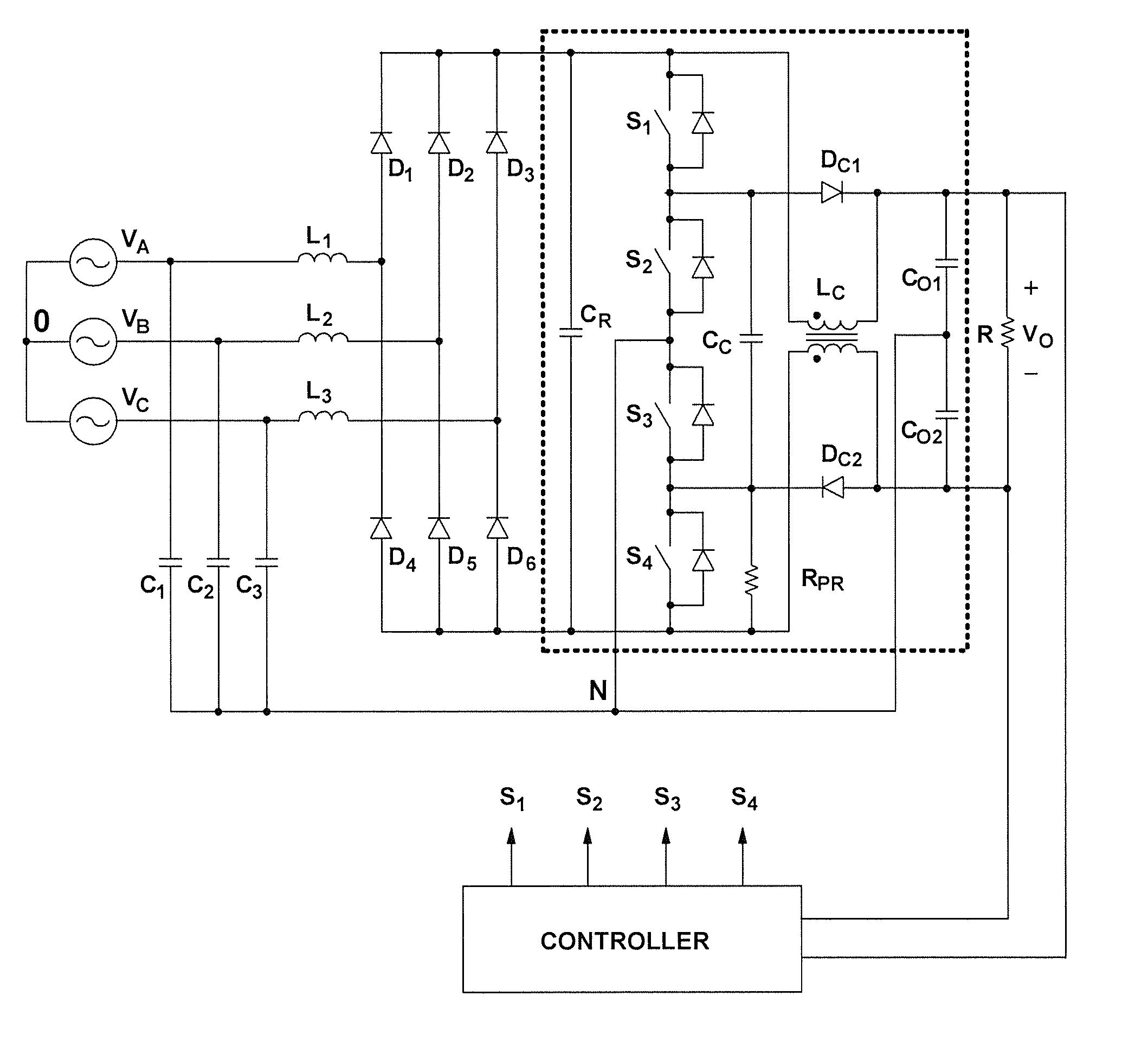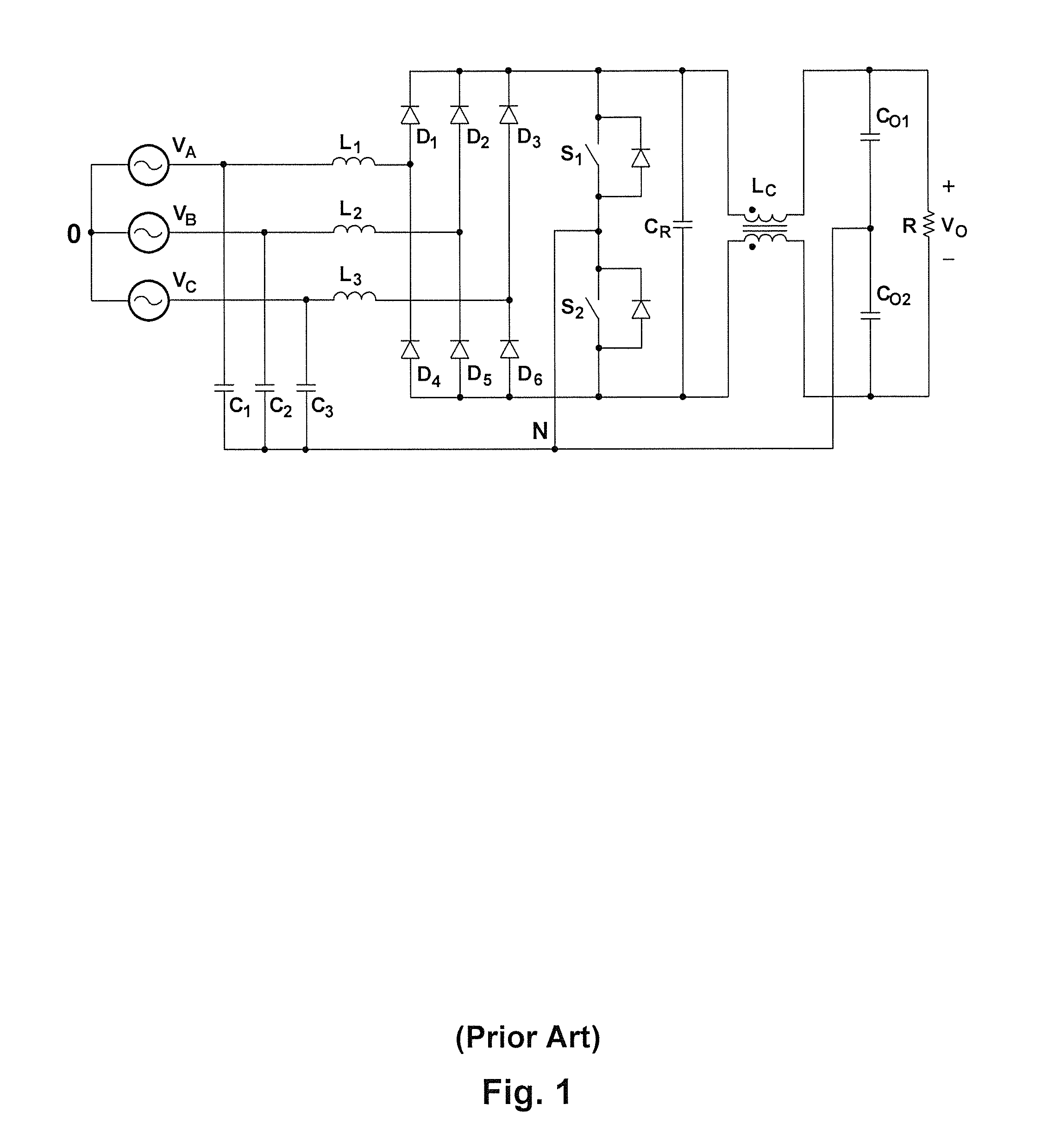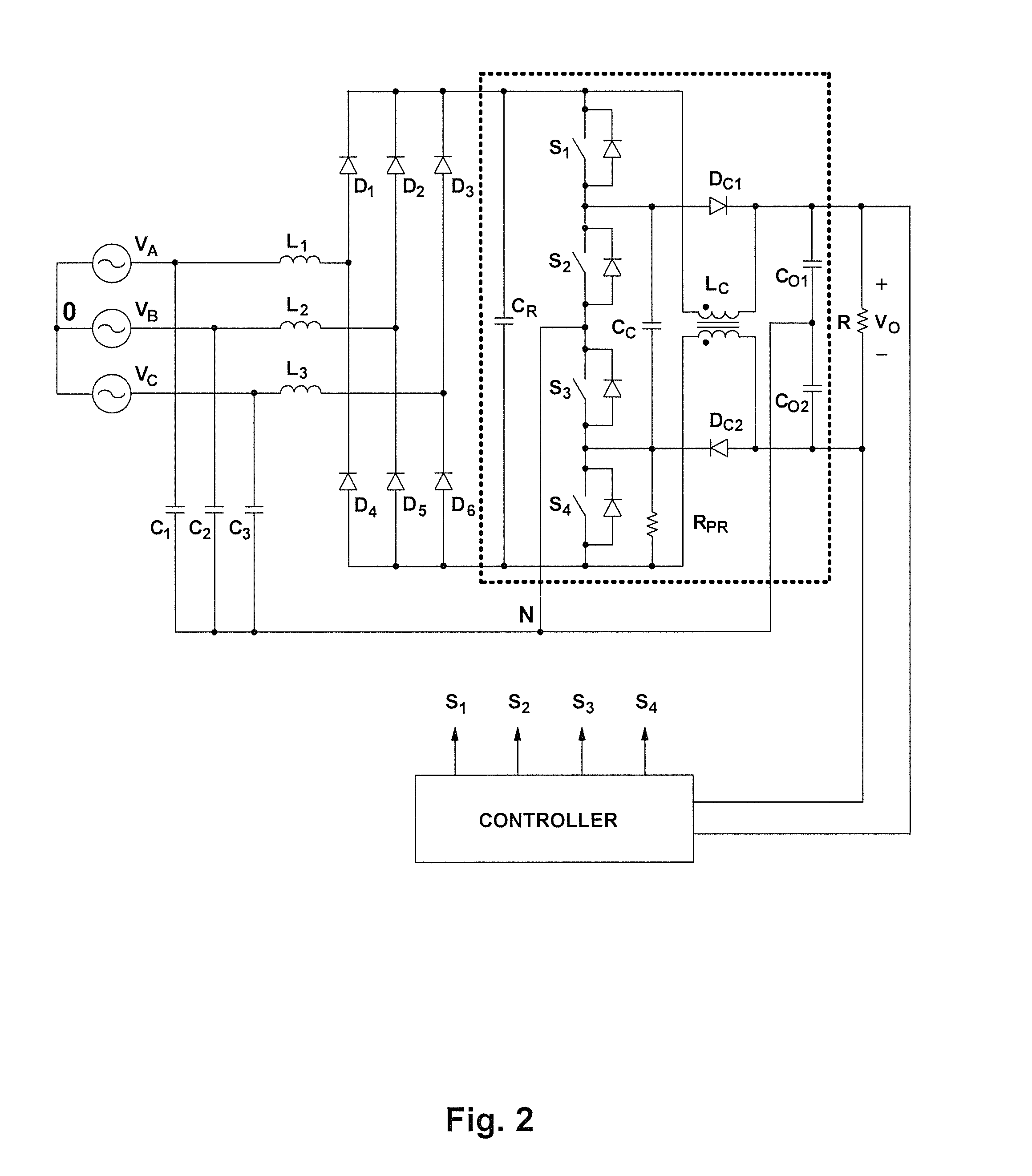Three-phase three-level soft-switched PFC rectifiers
a pfc rectifier, three-phase technology, applied in the field of frontend rectifiers, can solve the problems of limited approaches to reduce conduction losses, and achieve the effect of reducing conduction losses and lowering voltage ratings
- Summary
- Abstract
- Description
- Claims
- Application Information
AI Technical Summary
Benefits of technology
Problems solved by technology
Method used
Image
Examples
Embodiment Construction
[0042]FIG. 2 is a block diagram of a three-phase, three-level ZVS PFC DCM low input-current-harmonic boost rectifier according to an embodiment of the present invention. The input stage of the circuit in FIG. 2 includes boost inductors L1, L2, and L3 coupled to capacitors C1, C2, and C3 connected in a Y (“star”) configuration. The input stage of the circuit may also include an EMI filter (not shown in FIG. 2) at the three-phase input terminals. The common node N of capacitors C1, C2, and C3 is connected to a node between serially-connected switch pairs S1-S2 and S3-S4 and also to a node between split output capacitors CO1 and CO2. The node between serially-connected switches S1-S2 is connected to output capacitor CO1 through clamping diode DC1, so that the voltage across switch S2 is clamped to the voltage across capacitor CO1, which is preferably one half of output voltage VO. The node between serially-connected switches S3-S4 is connected to output capacitor CO2 through clamping d...
PUM
 Login to View More
Login to View More Abstract
Description
Claims
Application Information
 Login to View More
Login to View More - R&D
- Intellectual Property
- Life Sciences
- Materials
- Tech Scout
- Unparalleled Data Quality
- Higher Quality Content
- 60% Fewer Hallucinations
Browse by: Latest US Patents, China's latest patents, Technical Efficacy Thesaurus, Application Domain, Technology Topic, Popular Technical Reports.
© 2025 PatSnap. All rights reserved.Legal|Privacy policy|Modern Slavery Act Transparency Statement|Sitemap|About US| Contact US: help@patsnap.com



